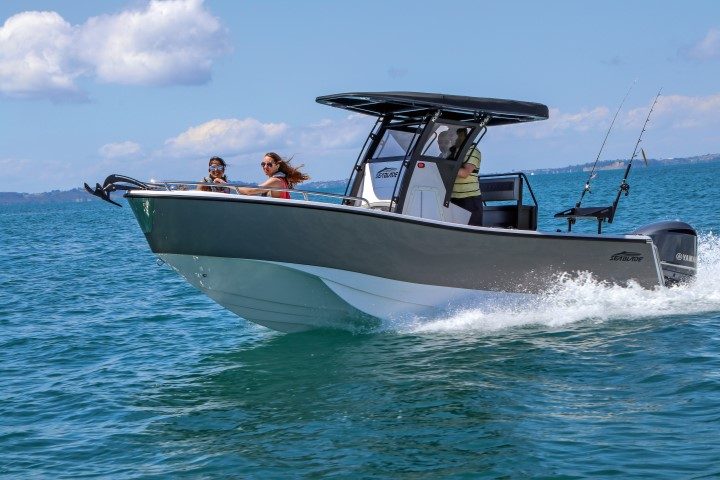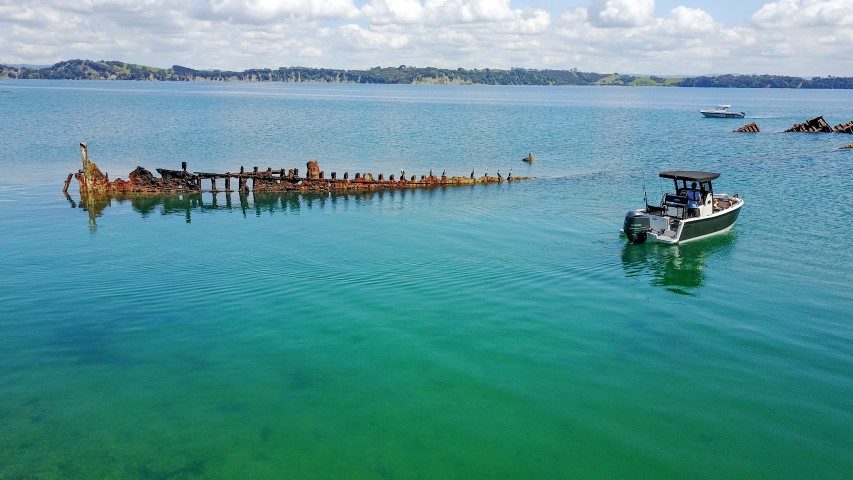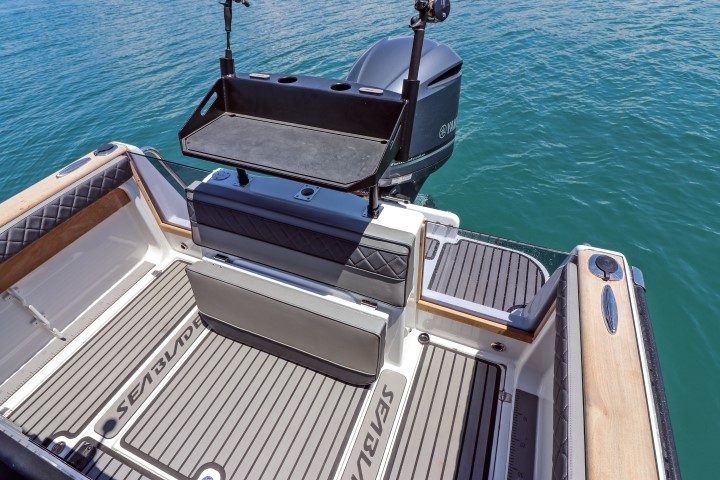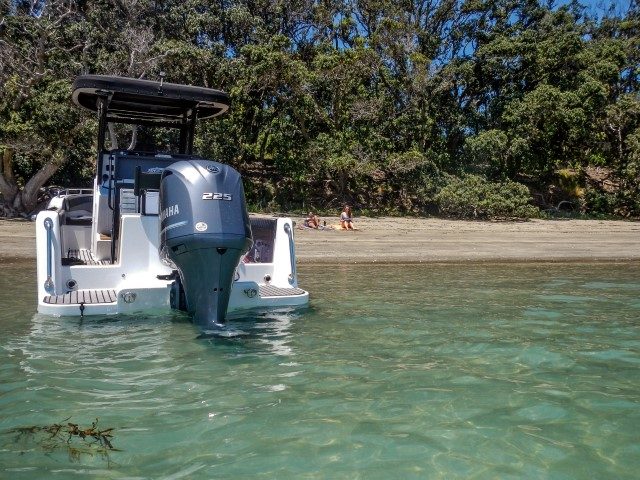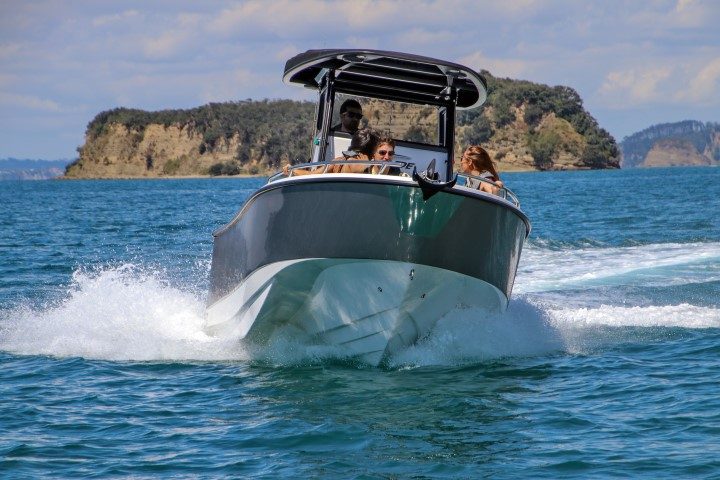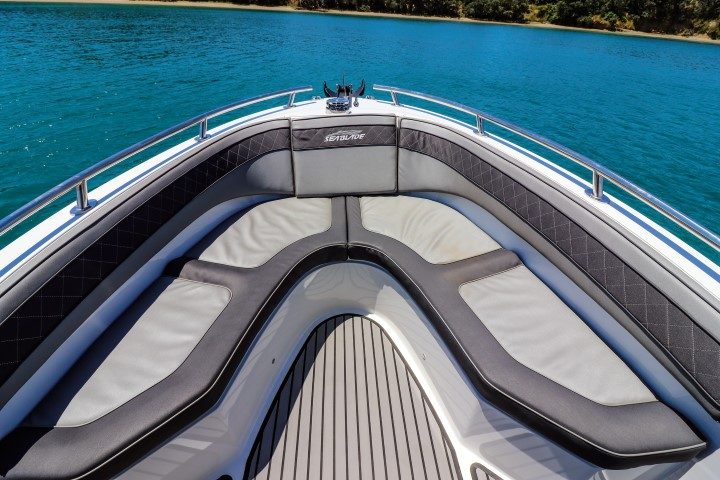‘Behemoth’ is a word which springs to mind or, perhaps more nautically, ‘leviathan’.
- CZone
- High-tech hull works as designed
- Stable, efficient and sea-kindly
- Smooth, comfortable ride
- Well conceived and executed deck plan
- Zipwake gyro-stabilised dynamic trim control
- Comprehensive elctronics and entertainment packages
- Well finished and superbly presented
- Ground-breaking hull design
- Corners flat

